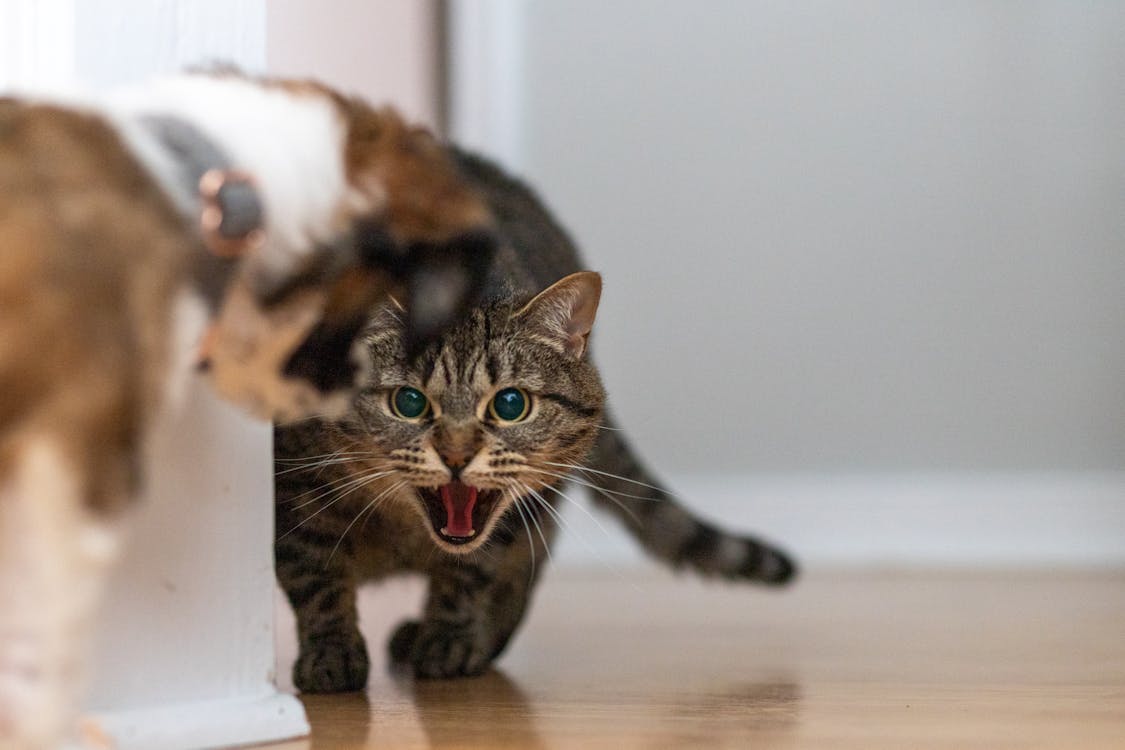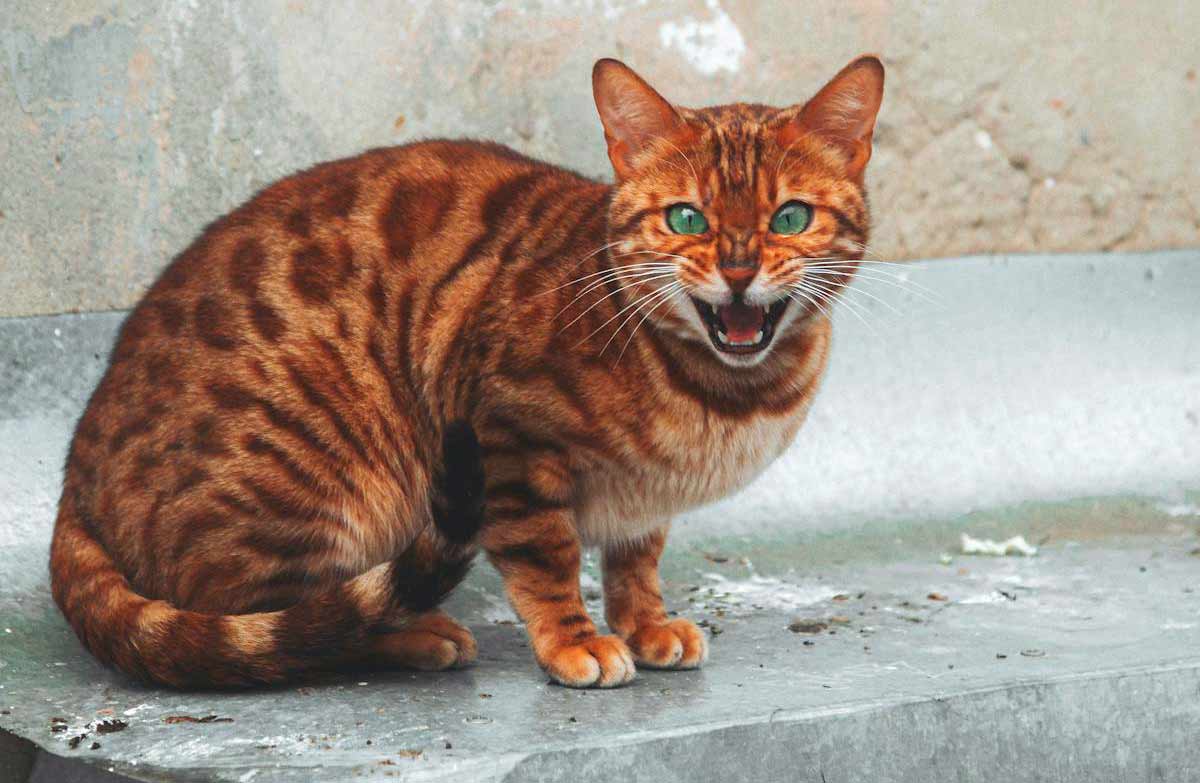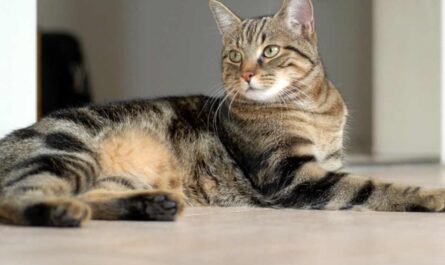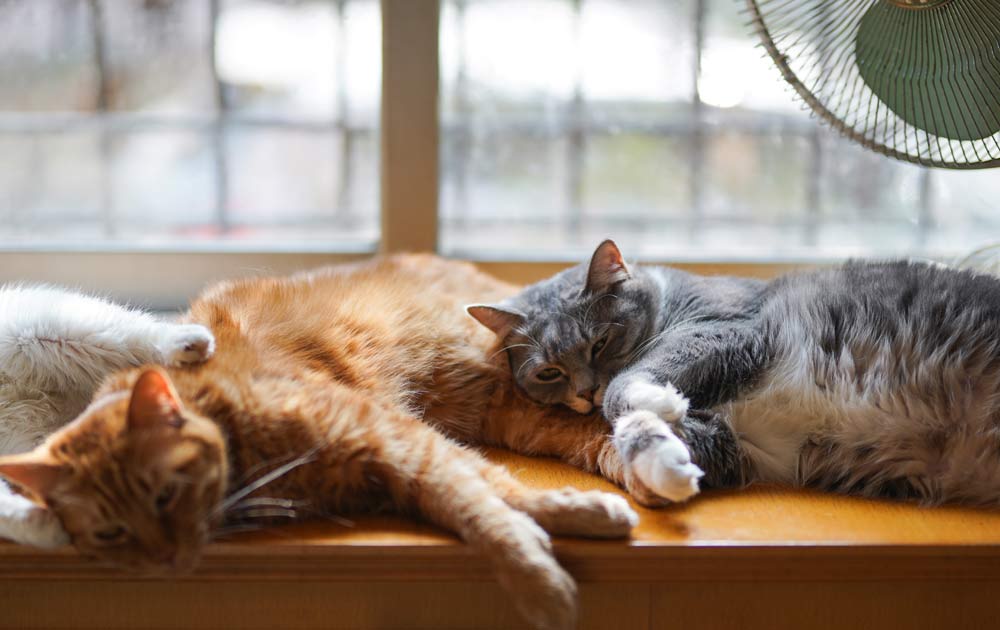How to tell if your cat is trying to hurt you? Ever found yourself sporting a surprise scratch or wondering if that playful nip from your cat crossed the line into aggression? Fear not, fellow cat parent! Understanding your feline friend’s communication is key to deciphering their intentions and fostering a harmonious home. Remember, responsible pet ownership means recognizing the subtle nuances of their language, and this article is your guide to navigating the sometimes confusing world of cat communication.
Before we dive into the claws of the matter, let’s address the elephant in the room (or rather, the cat on the couch). While some cats might harbor secret dreams of world domination (okay, maybe just conquering the living room), most often, those nips and swats are simply playful expressions. But how can we tell the difference between harmless fun and genuine aggression? By understanding their body language, vocal cues, and even the context of the situation, we can become fluent in the language of our feline companions.
Unraveling the Meow-stery: A Crash Course in Cat Communication
Imagine your cat as a tiny, furry translator, constantly sending messages through body language, vocalizations, and behavior. A twitch of the tail, a flick of the ear, a purr that could melt glaciers – each detail holds meaning. Let’s explore some key elements:
- Body Language: A relaxed posture with a soft gaze and a gently swishing tail usually indicates contentment. Conversely, a flattened back, arched body, and dilated pupils signal fear or aggression.
- Vocalizations: The classic purr is a purr-fect example of feline happiness. However, hisses, growls, and ear-splitting yowls can indicate discomfort or displeasure.
- Behavior Patterns: Playful nips and pounces are often accompanied by playful vocalizations and relaxed body language. But if your cat becomes overly fixated, their playful aggression might need redirection.
Playful Paws or Pointed Threats? Decoding the Bite
Now, let’s address the infamous nip. While a gentle nip during playtime might be your cat’s way of saying “bring it on!”, a firm bite accompanied by growls or tense body language signifies something more serious. Here are some key factors to consider:
- Context: Is your cat engaged in a playful chase with a toy, or are they cornered and feeling threatened? The situation sets the tone.
- Intensity: A gentle nip is different from a forceful bite. Pay attention to the pressure and intent behind the action.
- Body Language: Remember, a relaxed posture and playful vocalizations usually indicate harmless fun, while tense muscles and growls suggest true aggression.
When Fear Takes the Wheel: Understanding Fearful Aggression
Sometimes, even the most cuddly cat can exhibit aggression when they feel scared or threatened. This “fearful aggression” can manifest as hissing, swatting, or even biting. It’s important to identify the source of their fear, whether it’s a new pet, unfamiliar surroundings, or loud noises.
The key in such situations is to create a safe and calming environment for your cat. Remove the source of their fear if possible, provide plenty of hiding spots, and offer gentle reassurance. Remember, patience and understanding are key to helping your feline friend overcome their anxieties.
Redirecting the Playful Prowl: Keeping the Fun Fur-ever
Even the most playful cat can get carried away sometimes. If your furry friend’s nips are becoming a bit too enthusiastic, don’t despair! Here are some tips for redirecting their playful aggression:
- Engage them with appropriate toys: Offer wand toys, feather teasers, or interactive puzzles to channel their hunting instincts positively.
- Establish boundaries: Gently disengage if the play becomes too rough, offering praise and redirection when they interact calmly.
- Provide plenty of playtime: A tired cat is a happy cat! Regular playtime sessions help release pent-up energy and prevent boredom-induced nips.
Remember, understanding your cat’s communication is a journey, not a destination. By observing their behavior, recognizing their cues, and responding with patience and empathy, you can build a strong and loving bond with your feline companion. So, ditch the fear of world domination and embrace the joy of deciphering the fascinating language of your furry friend!
Beyond Play: Identifying Potential Aggression
Understanding feline communication starts with observing your cat’s body language. Remember, cats are subtle communicators, so pay close attention to these signs:
Warning Signs
- Flattened ears: This often signals discomfort or fear, urging you to respect your cat’s boundaries.
- Bared teeth and dilated pupils: While sometimes seen in play, these can also indicate aggression, especially if accompanied by growling or hissing.
- Hissing and growling: These vocalizations are clear warnings to back off. Heed them carefully to avoid escalating the situation.
Remember: Context matters! A playful hiss during a wrestling match is different from a hiss accompanied by stiff posture and flattened ears.
Vocalizations
Differentiate between playful meows and aggressive growls. Playful meows are often higher-pitched and accompanied by happy body language, while growls are deeper and accompanied by tense stances. Remember, each cat has its own “meowcabulary,” so familiarize yourself with your furball’s unique sounds.
Posture and Tail Movement
An arched back, puffed-up fur, and a stiff tail can indicate tension or fear. While this doesn’t necessarily mean an imminent attack, it’s a sign to proceed with caution and respect your cat’s space. Conversely, a swishing tail doesn’t always mean aggression; it can also indicate excitement or playfulness. Observe your cat’s overall demeanor for a clearer picture.
Past Experiences
Consider your cat’s history. Have they displayed aggression before? Are there specific triggers you can identify? Has your cat experienced any medical conditions or past traumas that might be contributing to their behavior? If you’re unsure, consulting a veterinarian or animal behaviorist can be incredibly helpful.
Differentiating Play from True Aggression
Not all swats and nips are created equal. Here’s how to tell the difference between playful roughhousing and genuine aggression:
Intensity and Persistence
Playful aggression is usually lighthearted and doesn’t escalate quickly. True aggression, on the other hand, is often more forceful and persistent, with repeated attempts to inflict harm. Consider the duration and intensity of the behavior: playful nips are fleeting, while aggressive attacks are more sustained.
Targeting
Playful cats might swat at hands or feet, but true aggression involves targeted attacks aimed at specific body parts, often accompanied by biting or scratching. If your cat seems intent on causing you harm, it’s time to seek professional help.
Motivation
Understanding the “why” behind your cat’s behavior is crucial. True aggression can stem from various factors like territoriality, resource guarding (protecting food or toys), or even pain or discomfort. Addressing the root cause is key to preventing future incidents. How AI, ChatGPT maximizes earnings of many people in minutes
Seeking Professional Help
Remember, you’re not alone! If your cat is displaying concerning aggressive behavior, don’t hesitate to consult a veterinarian or animal behaviorist. They can help you identify the cause of the aggression and develop a safe and effective behavior modification plan. With patience, understanding, and professional guidance, you can foster a happy and harmonious relationship with your feline friend.
Remember, a well-socialized and enriched cat is less likely to exhibit aggressive behavior. Providing ample playtime, scratching posts, and hiding spots can go a long way in keeping your kitty content and relaxed. And most importantly, always approach your cat with respect and understanding – their unique communication style takes time and patience to decipher, but the rewards are purrfectly worth it! Motivation – Mind – Success – Thinking – Productivity – Happiness
Building a Peaceful Household: Fostering Understanding and Trust
Remember, even the most playful swat or hiss often stems from a misunderstanding. By addressing your cat’s needs and creating a safe, enriching environment, you can minimize unwanted behaviors and nurture a trusting bond.
Enrichment and Exercise: Unleashing the Inner Playful Panther
Just like us, cats thrive on mental and physical stimulation. Boredom and pent-up energy can manifest in unexpected ways, including nipping, scratching, or even vocalizations. Provide your feline friend with an array of engaging toys, rotate them regularly, and dedicate time for interactive playtime. Consider scratching posts, climbing structures, and window perches that cater to their instincts to stalk, climb, and explore. A stimulated cat is a happy cat, less likely to resort to unwanted behaviors. Business – Money Making – Marketing – E-commerce
Respecting Boundaries: Navigating the Personal Space Minefield
Cats are masters of personal space, and respecting their boundaries is key to avoiding unwanted reactions. Learn to recognize their subtle cues – flattened ears, a swishing tail, or dilated pupils – indicating discomfort. Avoid forcing interactions, allow them to approach you on their terms, and provide quiet hideaways where they can retreat when overwhelmed. Remember, a purring cat on your lap is a happy cat initiating contact, not one seeking to be picked up.
Positive Reinforcement: Building Bridges with Love and Play
Cats are incredibly intelligent creatures who respond best to positive reinforcement. Instead of reprimanding unwanted behaviors, focus on rewarding desired ones. Offer treats, praise, and enthusiastic playtime sessions when your cat exhibits calm and gentle interactions. This positive association strengthens your bond and encourages them to repeat these behaviors. Health books, guides, exercises, habits, Diets, and more
Creating a Calm Environment: A Purrfect Oasis for Your Feline
Loud noises, unfamiliar visitors, or even new furniture can trigger stress in your cat, leading to defensive behaviors. Minimize stressful triggers when possible, and introduce changes gradually. Create designated quiet spaces where your cat can feel safe and secure. Consider using diffusers with calming scents like catnip or valerian root to promote relaxation.

Debunking Common Myths: Separating Facts from Furry Fables
Understanding common misconceptions about cat behavior can go a long way in fostering a positive relationship with your feline friend.
Myth 1: Cats are Inherently Aggressive: This simply isn’t true! While cats have individual personalities, most exhibit playful, affectionate behavior when their needs are met and they feel safe. Aggression often stems from fear, discomfort, or underlying medical conditions. Fitness – Meditation – Diet – Weight Loss – Healthy Living – Yoga
Myth 2: Punishment Solves Aggression: Scolding, hitting, or spraying your cat might temporarily stop the behavior, but it can damage your bond and worsen the situation in the long run. Instead, focus on identifying the root cause of the aggression and implementing positive solutions like enrichment, desensitization, and positive reinforcement.
Myth 3: Declawing Solves Aggression: This harmful and unethical practice removes the last bone of each toe, causing debilitating pain and long-term health problems. Scratching is a natural behavior, and providing appropriate scratching posts, training, and addressing underlying anxieties are far more humane and effective solutions. RPM 3.0 – 60% CONVERSION & Money for Affiliate Marketing
By understanding your cat’s communication, addressing their needs, and debunking common myths, you can cultivate a peaceful and loving relationship with your feline companion. Remember, patience, empathy, and positive reinforcement are the keys to unlocking the secrets of your cat’s purrfect language and building a lifelong bond filled with mutual respect and affection.
Final thought: Celebrating the Unique Bond
Understanding your cat’s communication is an ongoing journey, filled with purrs, playful swats, and the occasional surprise. By learning to differentiate playful antics from genuine aggression, creating a safe and enriching environment, and seeking professional help when needed, you can foster a trusting and fulfilling relationship with your furry companion. Remember, even the most mischievous moments are testaments to the unique bond we share with these fascinating creatures. So, embrace the joys and challenges of cat parenthood, and celebrate the purrfectly imperfect dance of communication you share with your feline friend. Cat accessories on Amazon
Decoding the Dance: Signs of Playful Frolicking
Cats are natural hunters, and their playful behaviors often mimic stalking and pouncing techniques. So, when your ankle becomes the target of a surprise attack or your hand the recipient of playful nips, it’s more likely a game of “catch me if you can” than an act of malice. Look for these telltale signs of playful aggression:
- Loose body language: A relaxed posture, swishing tail, and playful vocalizations like chirps or trills indicate your cat is having fun, not feeling threatened.
- Batting with retracted claws: Gentle paw swats with claws tucked away are an invitation to play, not a sign of aggression.
- Playful bites: Gentle nibbles that don’t break the skin are part of feline playtime, mimicking how kittens learn bite inhibition from their mothers.
When Play Crosses the Line: Recognizing Warning Signs
While most feline “aggression” is rooted in play, understanding signs of genuine discomfort is crucial to prevent escalation. If your cat exhibits any of the following, it’s time to take a break and re-evaluate the situation:
- Flattened ears: This signals your cat is feeling stressed or threatened.
- Dilated pupils: Wide eyes can indicate fear or aggression.
- Hissing or growling: These vocalizations are clear warnings to back off.
- Tail twitching or lashing: A rapidly moving tail signifies agitation.
- Skin raised and fur standing on end: This “piloerection” is a physical response to fear or aggression.
Building a Bridge of Understanding: Tips for Peaceful Coexistence
Remember, cats are creatures of habit and routine. Creating a predictable and enriching environment can minimize stress and potential “outbursts.” Here are some tips:
- Provide ample playtime: Engage your cat in interactive play sessions using wand toys, feather teasers, or puzzle feeders to channel their hunting instincts positively.
- Respect their boundaries: Pay attention to your cat’s body language and give them space if they seem overwhelmed or stressed.
- Offer safe hiding spots: Cats seek security, so provide cozy hideaways like climbing structures or cardboard boxes where they can retreat when needed.
- Schedule regular vet checkups: Underlying medical conditions can sometimes manifest as behavioral changes.
When in Doubt, Seek Professional Help
If your cat’s behavior concerns you, or if playful nips escalate into painful bites, don’t hesitate to seek professional guidance. Certified animal behaviorists can help you understand the root cause of your cat’s actions and develop strategies for positive reinforcement and behavior modification. Remember, early intervention can make a big difference in creating a harmonious relationship with your feline friend.
Other Interesting Articles
- How to Stop A Cat from Spraying after Neutering: 11 Tips
- How to Tell if A Cat is in Pain from Arthritis: How to Help
- 14 Reasons Why Is My Cat Making Weird Purring Noises
- How to Take Care of A Kitten without A Mother: 21 Tips
- What Is Caterwauling? 10 Most Common Reasons Cats Do It
- How to Introduce A Cat To A New Home When Moving?
- Cat Declawing: Tips, FAQs, Health, Alternatives, Pros, Cons
- New Cat? 20 Common Warning Signs When Introducing Cats
- 23 Sure Signs Your Cat May Be in Pain and How to Help It
- How to Stop A Neutered Cat From Spraying: 15 Simple Tips
- 12 Signs Your Cat May Require a Feline Companion
- Feline Pheromones: 12 Ways Calming Cat Pheromones Work
- Do Cats Feel Lonely without Other Cats? 6 Signs of Loneliness
- 10 Reasons Why Cats Hiss: How To Stop The Behavior
- Cat Feeding: Tips, Guide, FAQs, Chart for Kittens to Veterans
- Cat Vaccinations: Schedule, FAQs, Side Effects, and Costs
- 44 Strange, Weird, and Random Cat Behaviors Explained
- 21 Pro Tips for Fostering Kittens: Essential Care Guide
- 18 Cat Sounds Your Feline Makes: What They Mean
- Sexing Kittens: How to Tell, Determine the Sex of Your Kitten



